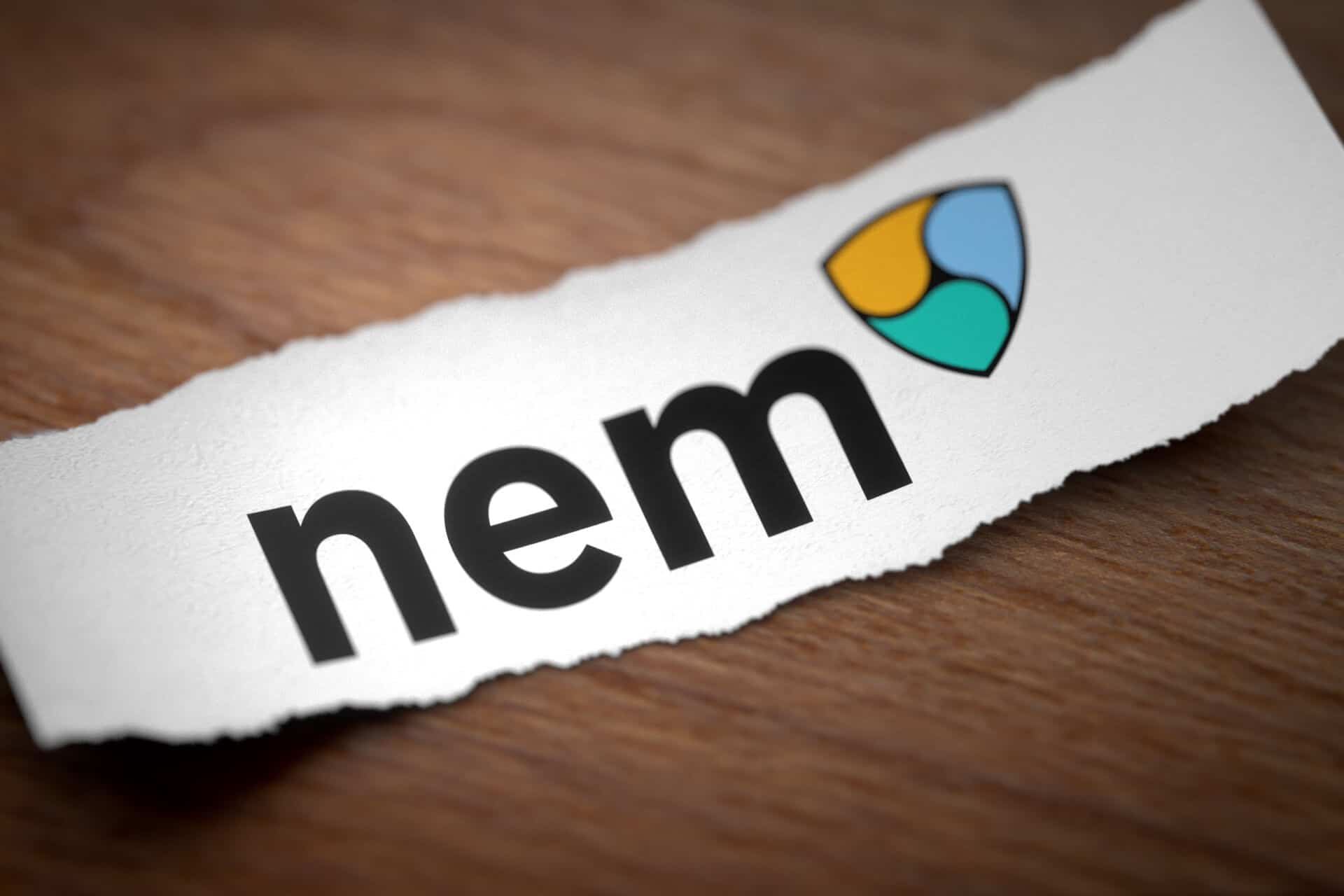The NEM Group — creators of the NEM NIS1 blockchain and XEM cryptocurrency — is launching today a new proof-of-stake public blockchain, Symbol, and native cryptocurrency XYM on the network.
The Symbol blockchain, which was four years in the making, is an enterprise-grade blockchain that has emerged amid the growing trend towards interoperability and tokenization.
The new Symbol blockchain will run in parallel with the NIS1 blockchain, which was launched in 2015.
“We’re looking to encourage interoperability and collaboration with the other blockchains. We’re not competing against them,” said David Mansell, chief operating officer at the Gibraltar-based NEM Group, in an interview with Forkast.News. “We want Symbol to be known as the chain to underpin what we call the new economy — using technology to create a fairer society that is more inclusive and accessible.”
The Symbol platform supports interoperability, with a hybrid chain architecture that allows users to deploy public and private chain use cases and trustless data flows across chains. Its application programming interfaces (APIs) is designed to facilitate easy integration with other systems and processes, and its on-chain, multi-layer, multi-signature accounts feature will enable companies to manage delegated financial authority requirements and streamline processes such as payroll, according to the NEM Group.
Symbol users will be able to create specialized digital assets, beyond tokens, to represent shares of stock, signatures, votes, non-fungible tokens (NFTs) or other currencies on the blockchain.
The way people are going to invest will fundamentally change because of tokenization, Mansell said. Tokenization is the conversion of physical or virtual assets into digital units that can be traded, and some of the benefits of tokenization include greater liquidity, faster and cheaper transactions as blockchain contracts can pre-define what happens, and more transparency, because rights can be embedded into smart contracts.
“It’s going to be a disruptor of many industries, not just the finance industry, although that will likely be the main focus to start with,” Mansell said. “It is more accessible and allows everyone in the world to participate in this new digital economy.”
See related article: Guide to tokens and NFTs: what is ‘tokenization’ and how does it work?
Digital whiskey
An example of turning real-world assets into tokens is the Kentucky Whiskey Digital Fund — a security token issuance by regulated digital asset manager Wave Financial that will allow investors to purchase asset-backed tokens, created on NEM’s Symbol blockchain, linked to an estimated inventory of four million bottles of bourbon.
The value of whiskey can appreciate significantly — typically three to five times over five years — during its aging process, and tokenizing its ownership can give investors access to the illiquid asset without the hassle of buying barrels of whiskey. “Giving that accessibility and creating a secondary market means I can trade in and out of that token on my own. And I’ve just made a ‘liquid’ illiquid asset liquid again,” Mansell said.
According to BNP Paribas Securities Services, regulatory uncertainty is, at present, one of the biggest obstacles hindering the development of tokenization.
Cross-functional partnerships to cover technical and regulatory areas, Mansell says, can open the market into tokenization. Symbol’s ecosystem includes partners such as Wave Financial, which it has invested in, and Propine, a Singapore-based regulated issuance and custody platform for security tokens.
See related article: NFT mania: Are blockchain art and NBA crypto collectibles a fad or the future?
“What we are at NEM is an ecosystem,” Mansell said. “We want to be associated with professional partners, regulated, to the right degree, in the right jurisdictions, for people to find it easy to come and participate in this new economy. We are determined to be the enabler to that.”
See related article: How tokenization via blockchain can digitize assets and open up investment opportunities
Central bank digital commemorative token
The world’s first central bank-issued blockchain-based digital collector coin — LBCOIN — will transfer from NIS1 to Symbol to leverage its enterprise-grade functionality.
LBCOIN — issued by Lithuania’s central bank last July on NEM’s six-year-old NIS1 public chain — is not a central bank digital currency, but rather a collectible that was released to commemorate Lithuania’s 1918 Act of Independence and its 20 signatories as well as allow the country to test the concept of a central bank digital currency.
LBCOIN consists of six digital tokens and one physical collector coin. Collectors who had purchased LBCOIN received six digital tokens that they could exchange for a physical collector coin, store at the LBCOIN e-shop, send as a gift, swap with other collectors or transfer to a NEM public blockchain network (NEM wallet).
“Digital money is inevitable in digital economy. Today, LBCOIN is what allows people in Lithuania and around the globe to test new technologies in a safe environment, e.g. go through all authentication procedures remotely, open an e-wallet, swap digital tokens with other collectors or transfer them to the public NEM network,” said Marius Jurgilas, member of the board of the Bank of Lithuania in a news release last July announcing LBCOIN’s launch. “At the same time, this also allows us to get the know‑how in issuing central bank digital currencies, which in turn should benefit the central bank community and the euro area as a whole.”
The Bank of Lithuania has issued 4,000 LBCOINs — or a total of 24,000 digital tokens and 4,000 silver collector coins — on NIS1.
See related article: 4 central banks and BIS exploring CBDC bridge for Asia and Middle East
What will happen to the older NIS1 blockchain?
With the public chain launch of Symbol, the NEM ecosystem will now comprise two blockchains — NIS1 and Symbol. The NIS1 original code is being reviewed, updated and will be open-sourced. “NEM is a decentralized ecosystem. No one has the right, nor control, nor the power to decide whether NIS1 continues to live on or dies. That is the beauty of decentralization” Mansell said.
The price of XEM, the native cryptocurrency of the older NIS1 blockchain, was volatile in the lead-up to Symbol’s launch and fell over 40% from US$0.59 to US$0.33 on Mar. 12, the day of snapshot — a predetermined moment (at a block height of 3,105,500) when users’ XEM balance on NIS1 was recorded for an allocation (“air-drop”) for the new XYM tokens — as investors who had bought XEM to get an allocation of the new XYM sold XEM after the snapshot was complete.
“Coins always pump before airdrop snapshots, and usually correct afterwards,” commented a user with the username “u/Findjin” in a forum about NEM on the online social network Reddit.
Previously top 10-ranked cryptocurrency by market cap, XEM now ranks at 31, trading at about US$0.37, with a market cap of US$3.3 billion as of publishing time. XEM started the year trading around US$0.20.
See related article: How blockchain is transforming the investing and securities industry
Driving mainstream enterprise adoption around the world
Beyond use cases, NEM is also looking to expand its geographical footprint. NEM enjoys strong support in Japan and has plans to also grow its community in South Korea and China, Mansell said.
NEM and XEM were in the news in 2018 when, in one of the biggest cryptocurrency heists of all time, hackers broke into Coincheck, one of Japan’s largest cryptocurrency exchanges, and stole over US$500 million worth of XEM. Earlier in the same month before the hack, XEM was ranked the sixth most popular cryptocurrency in the world by market capitalization, with prices exceeding US$1.80. The security breach was blamed on Coincheck, which stored its XEMs in a low-security hot wallet, according to media reports at the time.
More recently, NEM announced a partnership with Nikkei Sangyo Kokokusha, part of the Nikkei Group, to support the launch of Symbol. Earlier this month, NEM also announced that it had joined the Blockchain Collaborative Consortium (BCCC), an industry group promoting blockchain in Japan.





